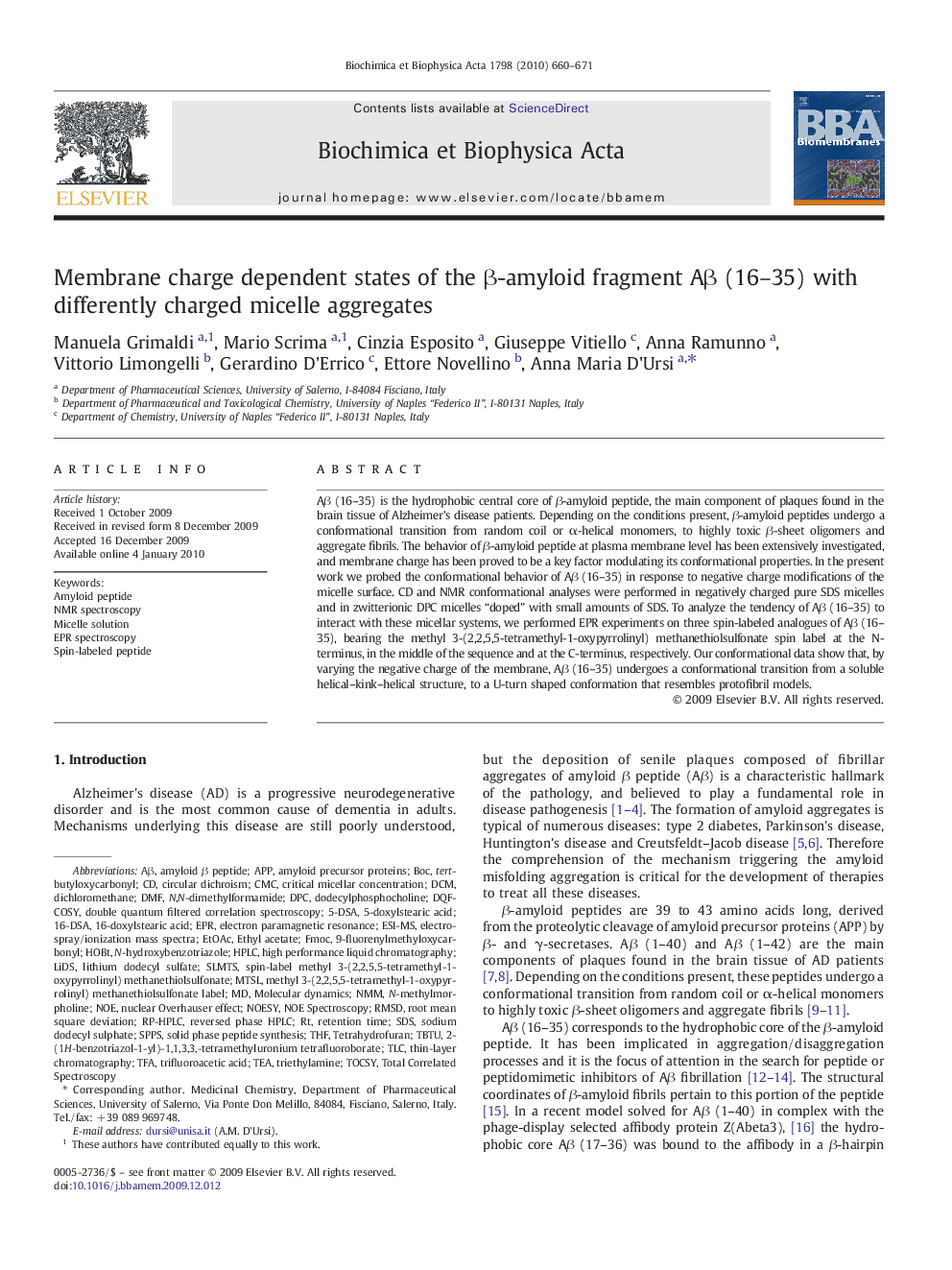| Article ID | Journal | Published Year | Pages | File Type |
|---|---|---|---|---|
| 1944775 | Biochimica et Biophysica Acta (BBA) - Biomembranes | 2010 | 12 Pages |
Aβ (16–35) is the hydrophobic central core of β-amyloid peptide, the main component of plaques found in the brain tissue of Alzheimer's disease patients. Depending on the conditions present, β-amyloid peptides undergo a conformational transition from random coil or α-helical monomers, to highly toxic β-sheet oligomers and aggregate fibrils. The behavior of β-amyloid peptide at plasma membrane level has been extensively investigated, and membrane charge has been proved to be a key factor modulating its conformational properties. In the present work we probed the conformational behavior of Aβ (16–35) in response to negative charge modifications of the micelle surface. CD and NMR conformational analyses were performed in negatively charged pure SDS micelles and in zwitterionic DPC micelles “doped” with small amounts of SDS. To analyze the tendency of Aβ (16–35) to interact with these micellar systems, we performed EPR experiments on three spin-labeled analogues of Aβ (16–35), bearing the methyl 3-(2,2,5,5-tetramethyl-1-oxypyrrolinyl) methanethiolsulfonate spin label at the N-terminus, in the middle of the sequence and at the C-terminus, respectively. Our conformational data show that, by varying the negative charge of the membrane, Aβ (16–35) undergoes a conformational transition from a soluble helical–kink–helical structure, to a U-turn shaped conformation that resembles protofibril models.
